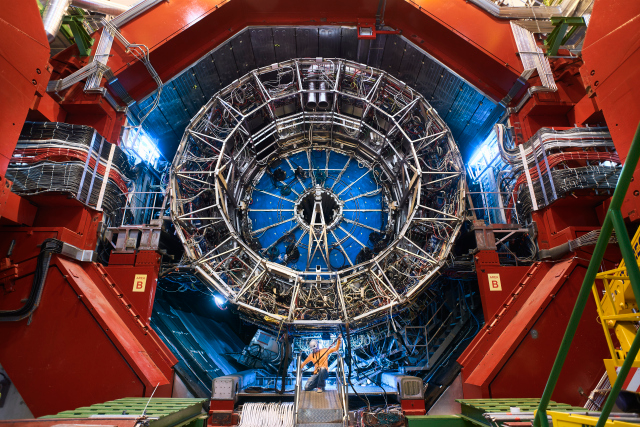May 29 2020
New results related to the synthesis rates of antideuterons has now been reported by the ALICE collaboration based on data gathered at the maximum collision energy achieved to date at the Large Hadron Collider.
 A view of the underground ALICE detector used in the study of the antideuteron Image Credit: CERN.
A view of the underground ALICE detector used in the study of the antideuteron Image Credit: CERN.
An antiproton and an antineutron together make an antideuteron. The new measurements are quite significant since the presence of antideuterons in space is a potential indirect sign of dark matter candidates. The study outcomes are regarded as a step forward in the quest for dark matter.
Recent cosmological and astrophysical results indicate that dark matter is the dominant form of matter in the universe, making up about 85% of all matter. Dark matter and its properties have been highly enigmatic phenomena, and unraveling its mysteries would pave a new path for physics.
The detection of antideuterons in space could be an indirect indication of dark matter as they could be synthesized during the decay or annihilation of sneutrinos or neutralinos, which are speculative dark matter particles.
Several experiments are being performed to search for antideuterons in the Universe, such as the AMS detector on the International Space Station.
But before the presence of dark matter can be inferred by detecting these nuclei, researchers must account for both their rates of production through other sources (i.e., collisions between cosmic rays and nuclei in the interstellar medium) and the rates at which they are annihilated when they bump into matter on their journey.
It is crucial to gain better insights into the production and annihilation rates to confirm that the detected antideuteron is associated with the presence of dark matter.
Researchers at ALICE made protons to collide in the LHC and simulated the production of antideuterons through cosmic-ray collisions. Thus, they could measure the production rate related to this phenomenon.
These measurements offer a crucial basis for modeling the processes through which antideuteron is produced in space. They compared the number of antideuterons identified with that of their antimatter—deuterons that do not annihilate in the detector—thus determining, for the first time, the probability of annihilation of low-energy antideuterons.
Measurements such as these will enable antideuteron studies in future close to the Earth, and help physicists identify whether they are signatures of the existence of dark matter particles, or whether they are manifestations of already known phenomena.
In the years to come, studies of this kind at ALICE could be extended to heavier antinuclei.
The LHC and the ALICE experiment represent a unique facility to study antimatter nuclei. This research will continue to provide a crucial reference for the interpretation of future astrophysical dark matter searches.
Luciano Musa, Spokesperson, ALICE Collaboration